I’ve expressed my love for trains on many occasions on this blog. Doesn’t matter how touristy, how pricey, how short or how long, if there is a train in town, I’m going to hop it. I attribute this love to many things. First, I came by it honestly. My Dad hopped into an open box car and rode all the way from Texas to California when he was only 18 years old. Wanderlust runs deep in the genes.
Then there is the romance and mystique, usually conjured up in movies and murder mysteries. I can’t watch the train station scene from the movie “Reds” where Warren Beatty steps onto the platform during the Russian Revolution to an awaiting Diane Keaton without getting teary-eyed. Same goes for the aerial scene of the steam engine train puffing across the African plane, carrying Meryl Strep to her farm in Africa. It’s tough to get that old world ambiance these days, but if it can be found anywhere, it’s likely to be on a train.
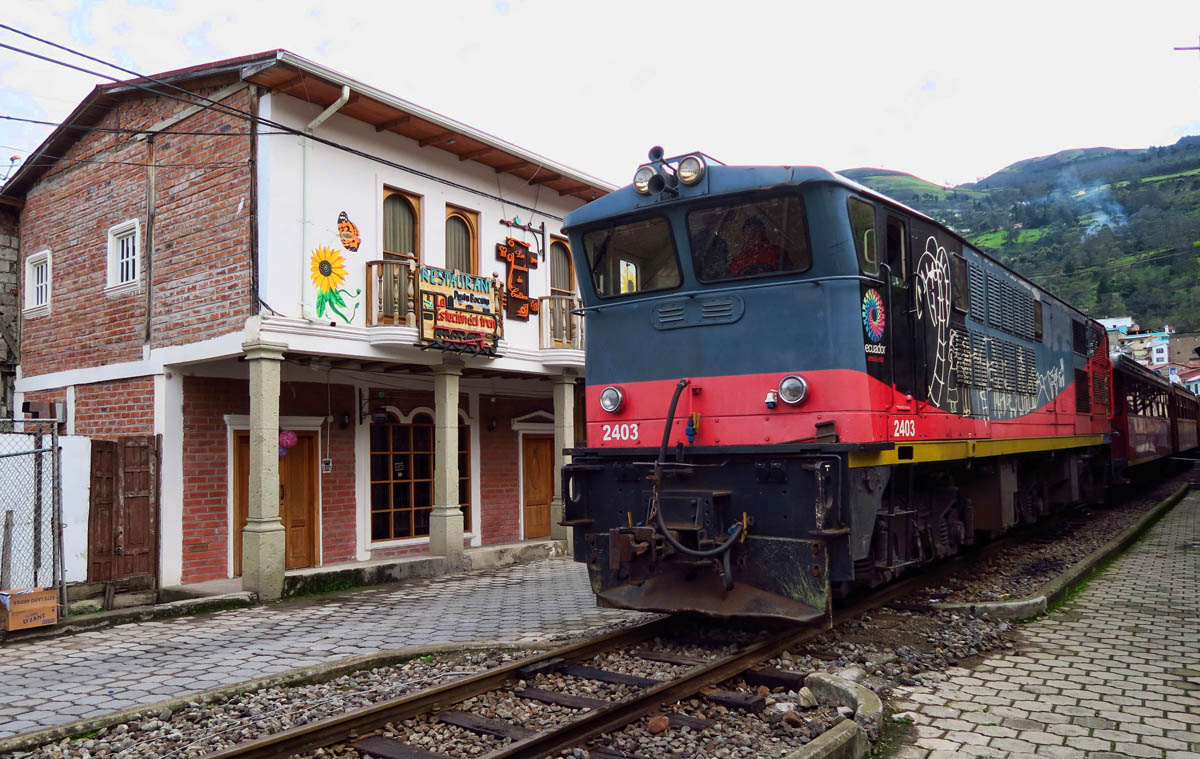
I am staying at La posada de Carlitos guesthouse, which is this building on the left overlooking the train station.
There is also the practical side of train travel in getting from point A to Point B. Though often times slower than bus travel, the same journey on the train will offer more leg room. It’s easy to get up and walk around, or bring refreshments along. And the scenery out the windows is not typically obscured by oncoming traffic or billboards.
But then there are those instances where the train exists now solely for the purpose of tourism. Such is the case with The Nariz del Diablo, or Devil’s Nose train out of Alausi. Once a part of the Trans-Andean railway project, construction was begun in the late 1800’s to facilitate train travel between Ecuador’s capital city of Quito and the port of Guayaquil.

I am booked on the 8:00am train. My lovely hostess gets up early to make breakfast before I walk across the street to board.

When booking train tickets, the “A” side stands for “abyss” while the “M” side stands for “mountain.” You want the A side, obviously.

This is the Gift Shop inside the Alausi train station, selling souvenirs of the train. What’s wrong with this picture?
The rail line was completed in 1908, but not without earning the reputation as “the most difficult railway in the world.” The route was constructed using mostly slave labor from Jamaica. Over 4,000 workers lost their lives, resulting in the moniker “the devil’s nose.” The train had to traverse a sheer vertical rock wall, accomplished through a series of switchbacks which enable the train to zig-zag up and back down the rock face.
Prior to the building of the railway, this route between Guayaquil along the Pacific Coast into the mountainous Quito at over 8,000 ft took two weeks at best, and that was in the dry season. During the monsoons, the route was often impassable altogether. However, the train cut the journey time between the cities from two and a half weeks to just two days, and was an economic lifeline between the coast and highlands. It remained a fully functioning route until 1997, when parts of the track were destroyed by rain and mudslides.

Red roofed building is our termination before we begin the climb back up. We will be there for an hour.
Now, the train serves a different purpose with the only remaining stretch from the original railway remaining being the 7.5 mile section operated as a tourist train from Alausi to Sibambe and return.
The Wanderbus makes a brief stop in Alausi, origin point of the Nariz del Diablo train, just long enough to drop off and pick up travelers interested in making the train journey. Alausi is a tiny town that likely would be a speck on the map were it not for the famous train.
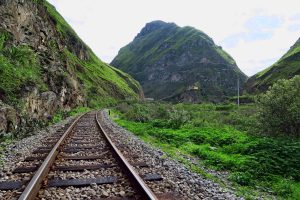
This is “the Nose.” If you imagine the Devil lying down, face up, you can sort of see the resemblance.
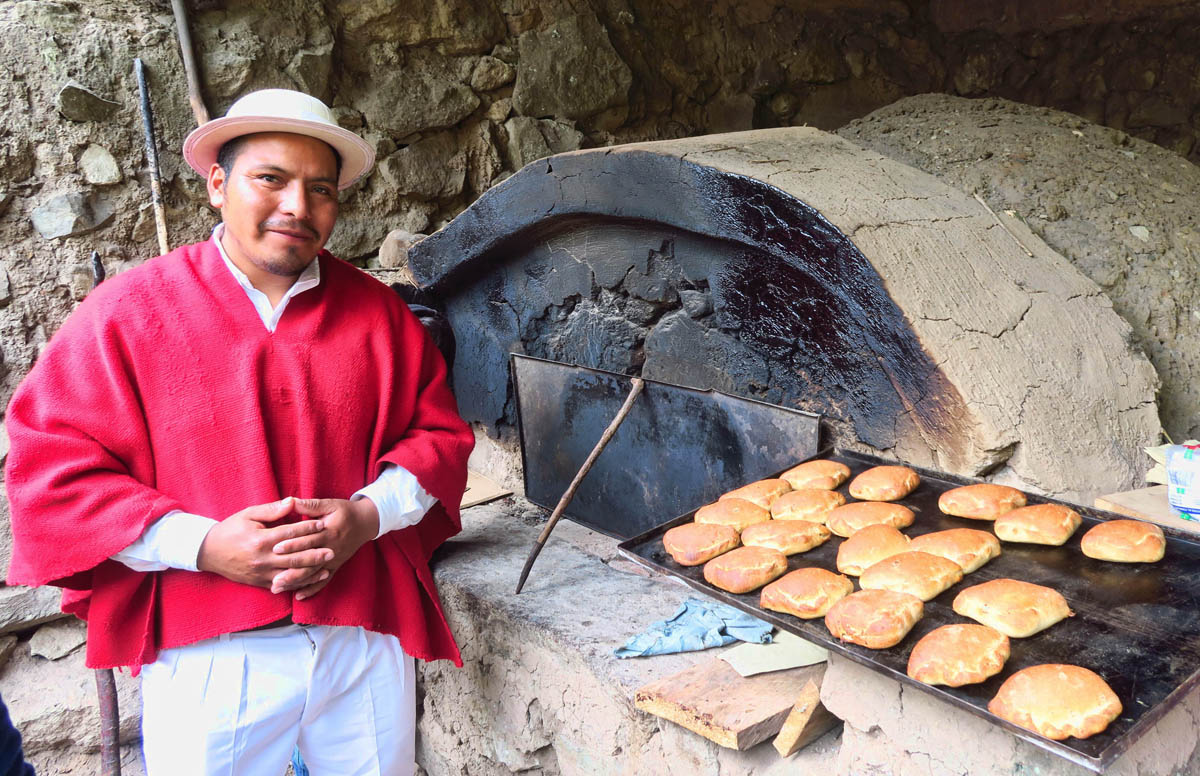
They are also demonstrating some of the methods used by their ancestors. They are selling these bland bisquits for 25 cents. One bite, and I was looking for a trash bin.
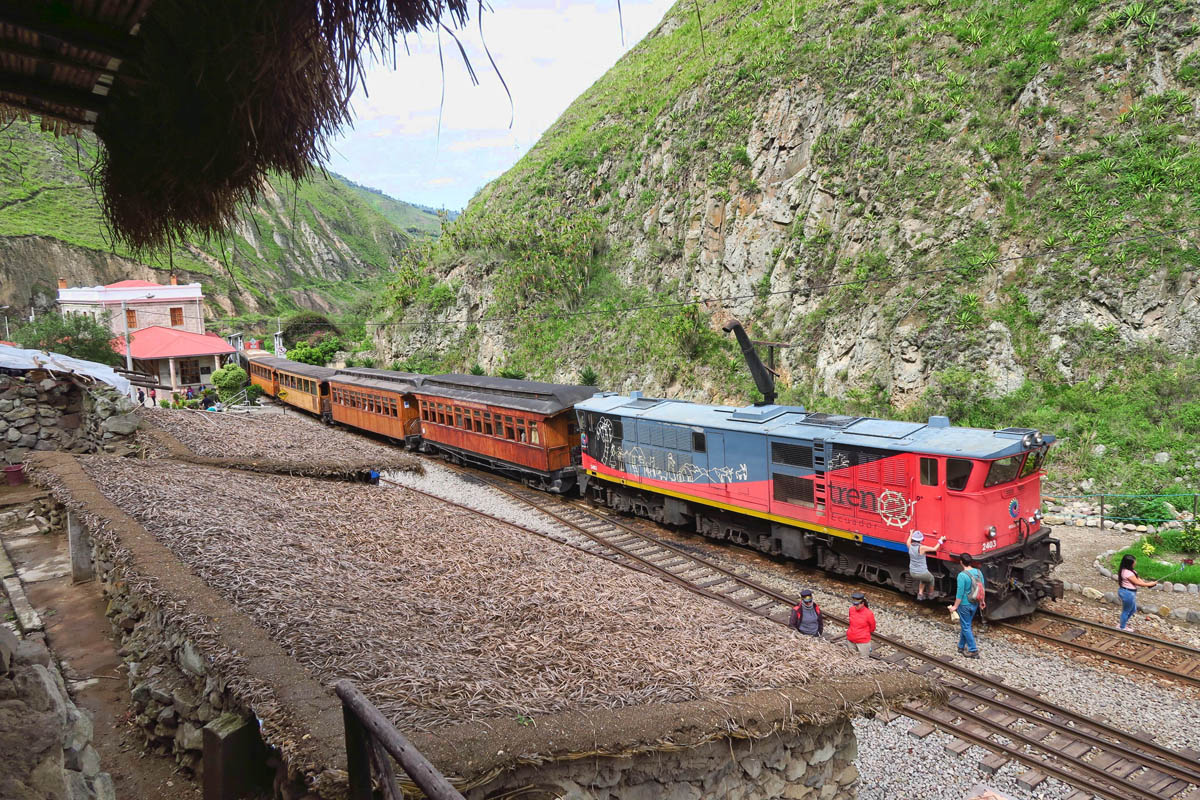
They have a “living museum” along the tracks with interpreters showing traditional ways of cooking, extracting juice from sugar cane, hut building, blacksmithing, etc. There is also a rather large cafe selling refreshments.
It’s a short journey to the bottom of the nose and back, only two and a half hours, with an hour of that being spent milling around in the tourist station at the end. There’s a folk dance performance and a “living museum” where locals reenact the life of their ancestors. It’s a bit corny, as I would have much preferred more time on the train. But that’s about all the track that is left! Only the most noteworthy remains, the infamous switchbacks.
The train pulls beyond the bifurcation, while the switchman flips the lever to change tracks. Then the train backs up toward the opposing switchback, zigzagging its way up and down the nose, much to the delight of tourists and train nuts alike!

Cambio de Pendiente, or change of slope or grade. You see this sign often on the train, particularly where the tracks change.

While in the station, the engine reversed ends. My car while originally first behind the engine is now the caboose. This gives me the perfect vantage point to photograph the switchbacks once the train reverses direction.
So was it worthy of a stop? Well, if you are a train enthusiast like I am, most definitely! But if it’s not along the way, maybe not, given the remoteness of the area and the lack of anything else going on in Alausi. Or so I thought…

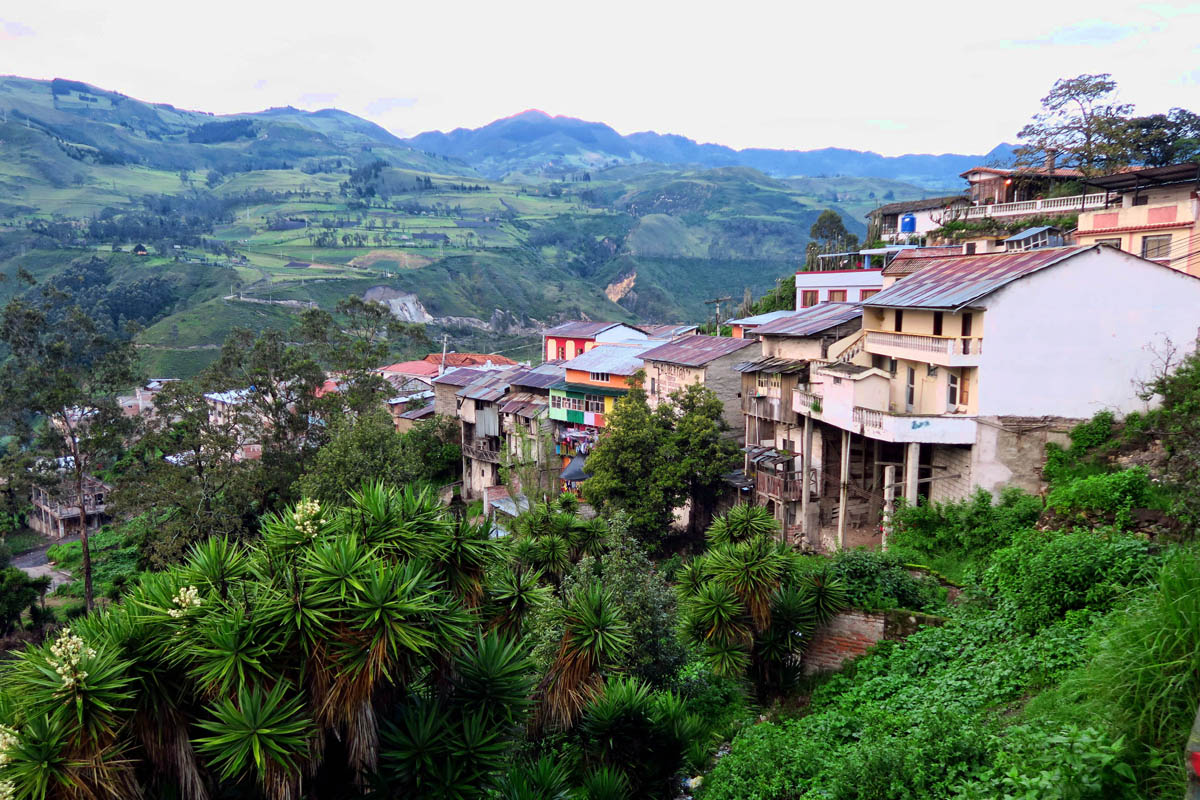


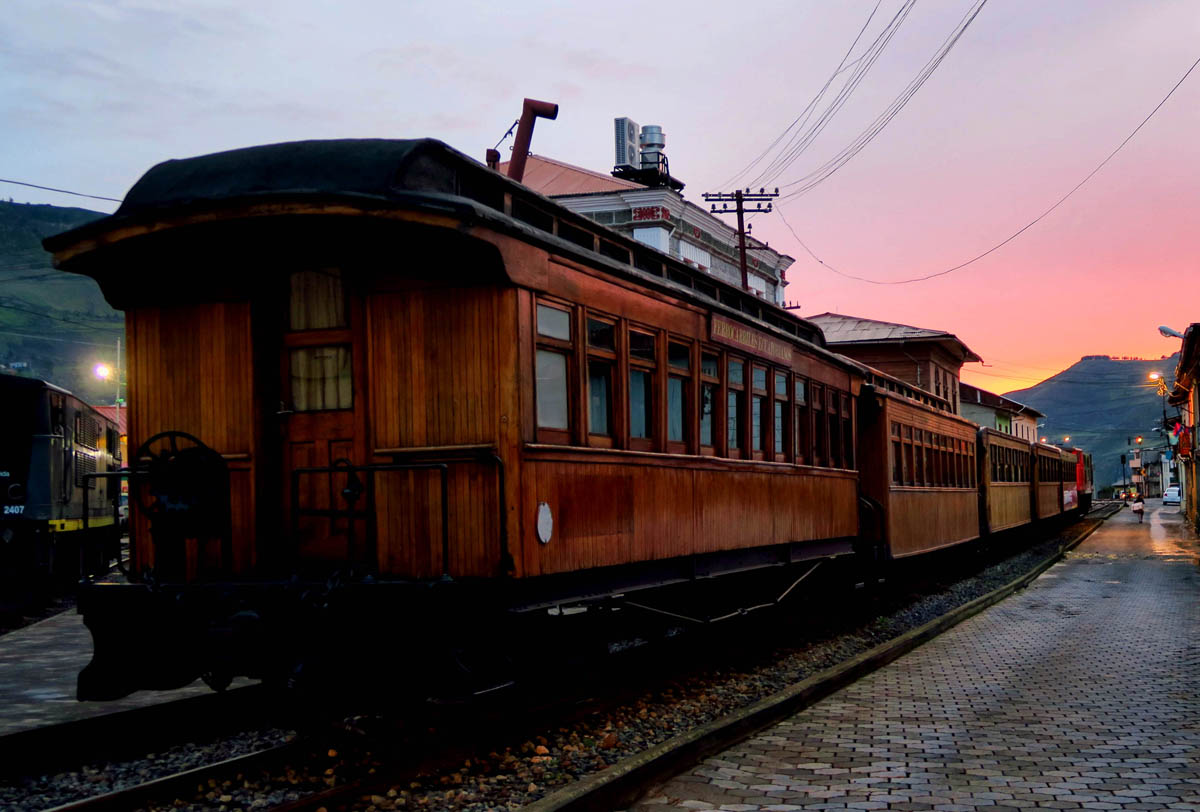
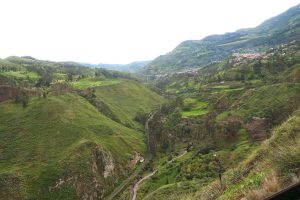
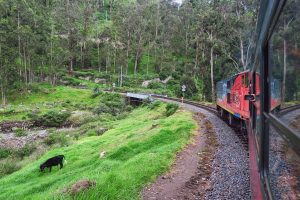

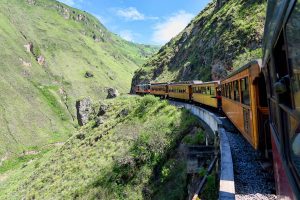
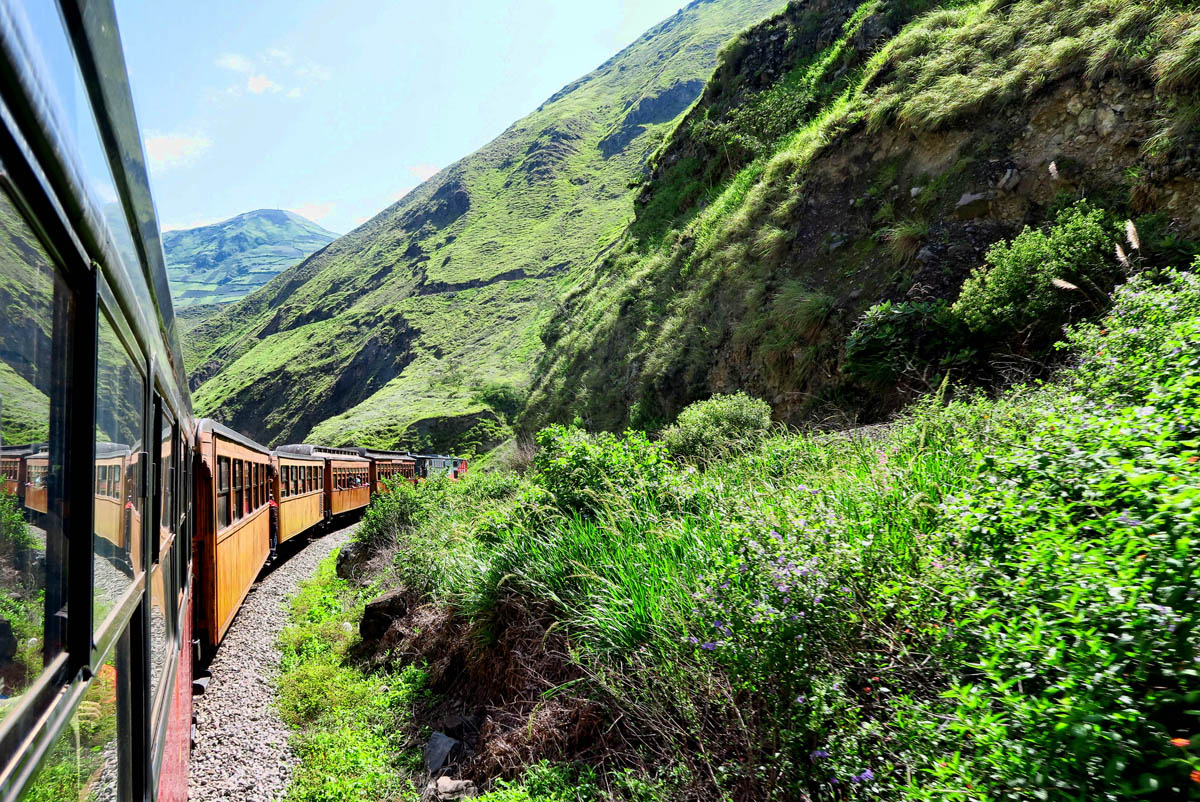

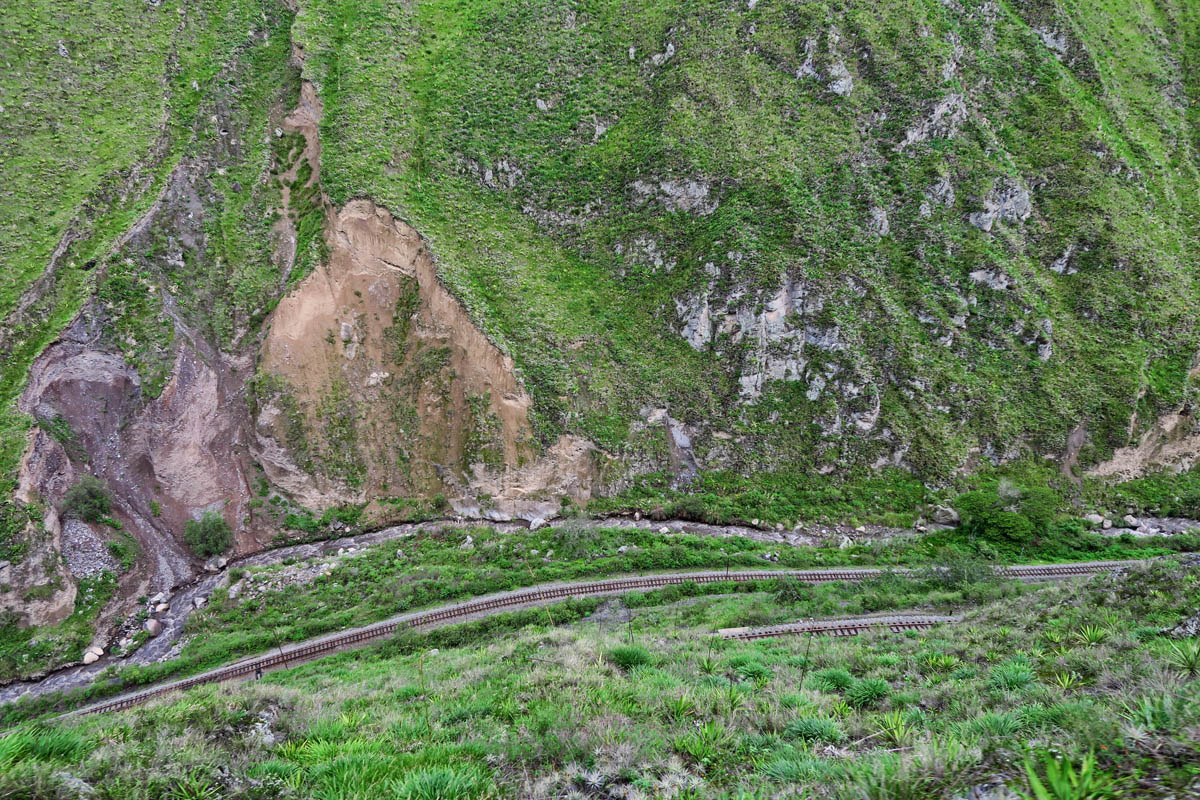
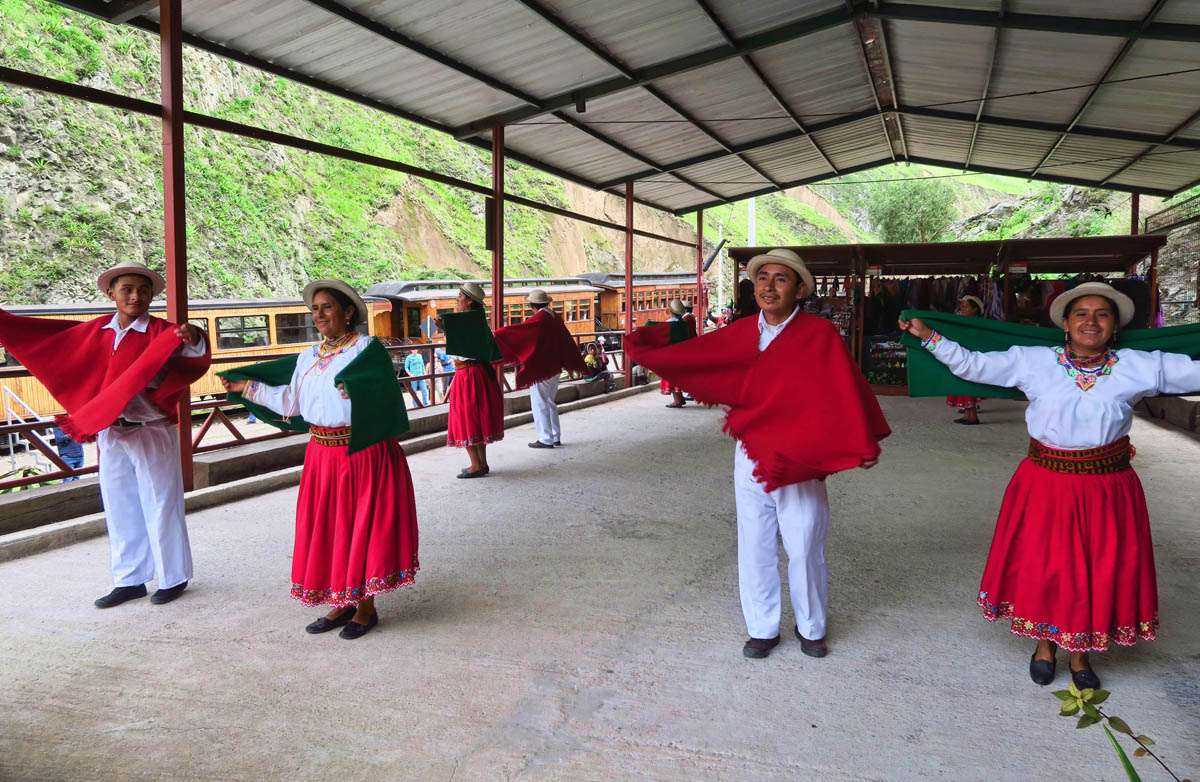
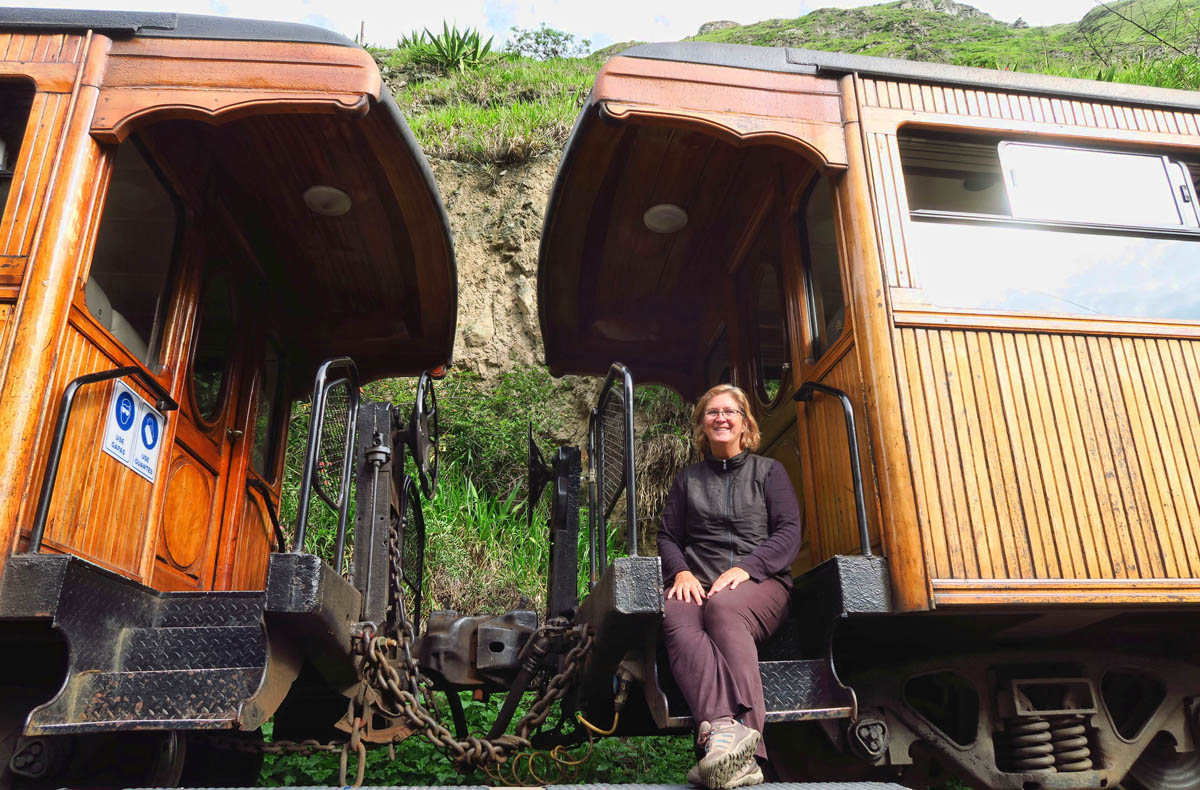

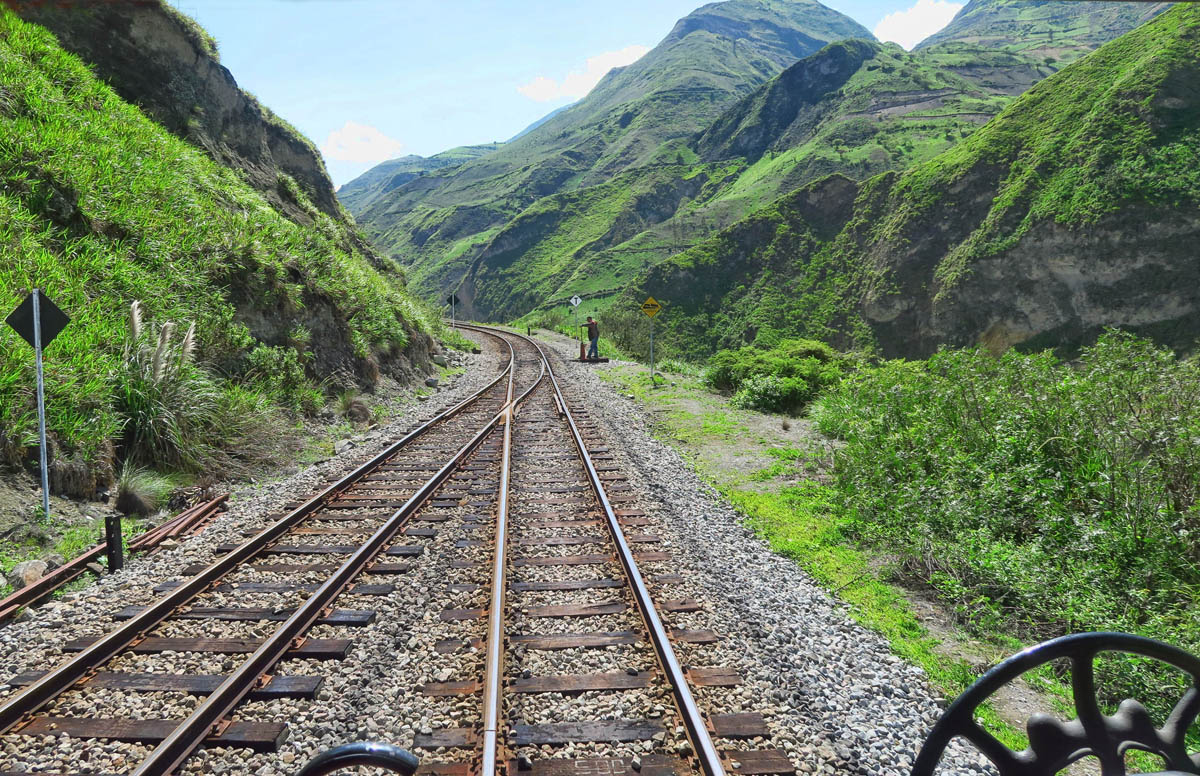
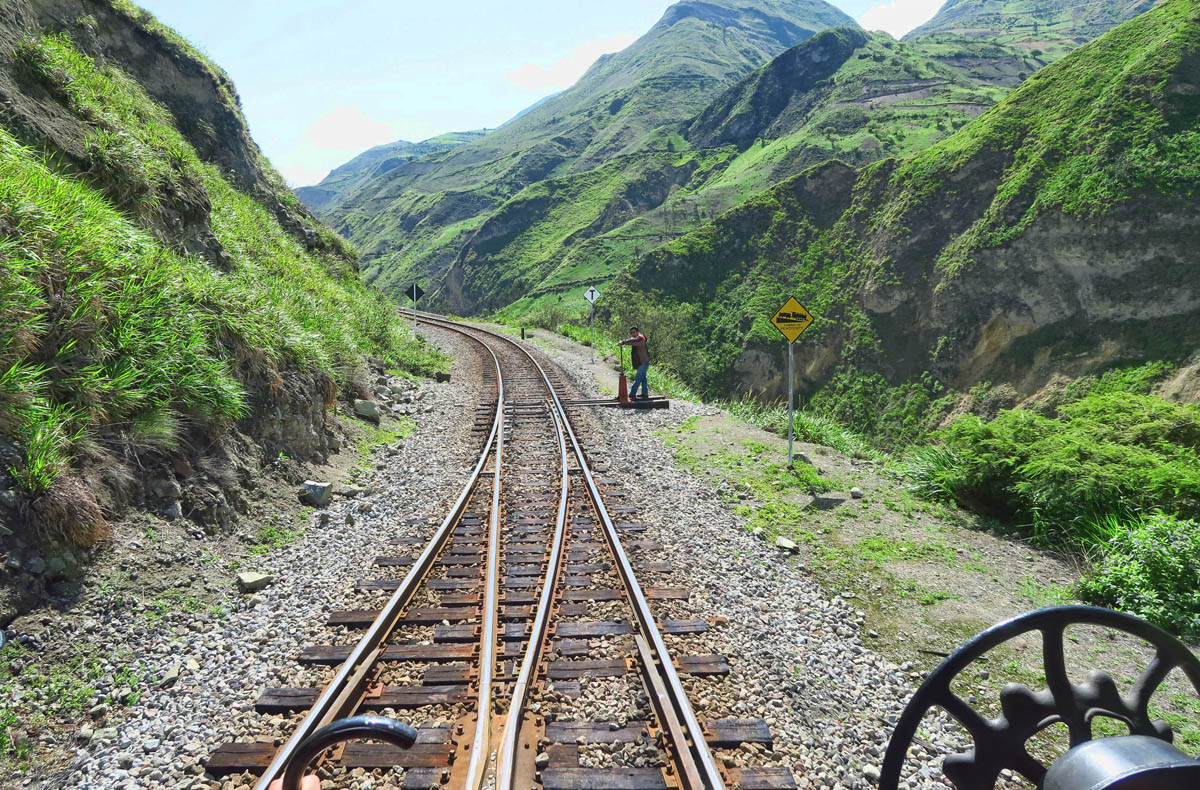
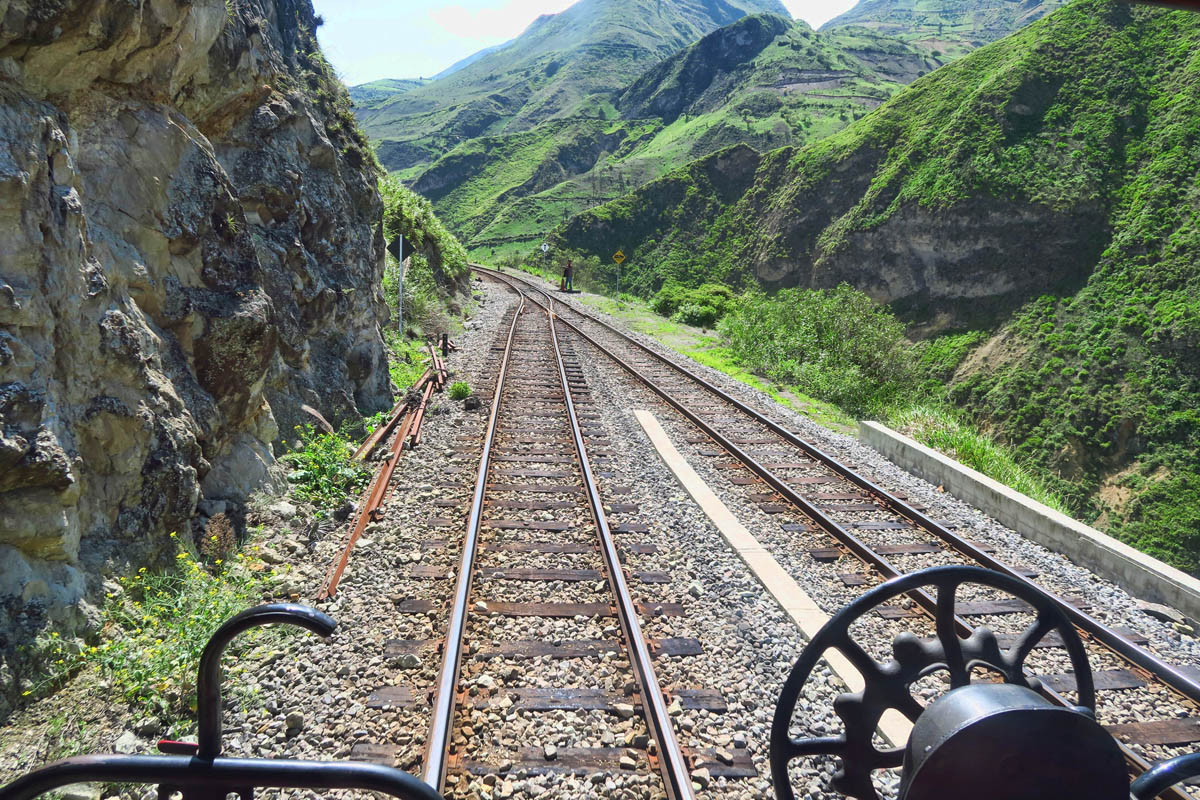

Hi Suzanne!
Are the cars restored originals or new manufacture? The wood looks beautiful! And do they get much snow in this area?
Hi, Jim. Sadly, there wasn’t much information about the actual train itself, just about the tracks. So I don’t know if they are originals. They were beautiful, though. I don’t believe they do get much snow. Being so close to the equator, they don’t really have “summer and winter” seasons, but rather “wet and dry.” It rains a lot there, but I believe snow is only at higher elevations. I think it is in the 50’s and 60’s consistently year round. Thanks for the comment!
Yay!! Thanks for the photo! I love the “or so I thought….” at the end of the post. I’m holding my breath!
Me too!! That comment caught my attention 🙂
WOW ! What a ride. I love trains too. My dad was a trainman. I would love that trip. Thanks for taking me along .
I too love trains and will always take the train in preference to any other form of travel. I’ve just returned from the Black Forest area in Germany and when you stay on a campsite there you pay the local taxes and in return, you get a free travel pass on trains buses and trams for the length of your stay. How great is that?
What a fun excursion , love you pictures and interesting information on history of the train.
What an experience in the switchback ride. It is fortunate they have at least kept this portion going for posterity. Thanks for the ride.
Marilyn
Romance and mystique eluded seven year old me in the late 50’s as I played on the depot platform of a train station in that tiny farm town in mid Missouri where my grandparents, then parents, were raised. My mother and I were awaiting a train that would whisk us off to shipyards located somewhere in the environs of New York City where we would then board the USNS (United States Navy Ship) General William O. Darby for a trans Atlantic voyage to Europe, where my dad was stationed with the Army.
I couldn’t grasp the reason for my grandmother’s tears until later, when I realized we would not see her again for three years, the length of our stay at the duty station near Mainz, Germany. As the only child of adventurous parents, we traveled on many a train across Europe during those three years for weekender mini trips to nearby countries. While I had no clue how fortunate I was to live in an age where train travel was an ordinary means of getting around (in Europe, no less!), I learned early on to appreciate the sights and sounds and smells and large picture windows of the many trains we ventured on.
So. Yes. I share your love of trains, Suzanne, and I thank you for this post which has me reminiscing about a bygone era from which I learned to love trains and travel and short European jaunts. Safely, in a time of innocence, long ago and far away…
Rhonda….what a sweet memory of that time in your life. Isn’t it interesting how we all have memories of trains in our past? My grandfather worked for the railroad and my very first memory is of my grandmother taking me on a train trip to visit cousins in Louisville, Kentucky, sooooo long ago.
For sure, Kat, I believe none of us can muse about train travel without conjuring up nostalgia. I’m sure many of us here enjoying Suzanne’s adventures feel fortunate to have experienced train rides in our younger years. 🙂
As the grandson of a gandy dancer and the son and nephew of brakemen and conductors on the Adirondack branch of the NYC railroad I too am fascinated by railroads. I have never seen a switchback before and thought that it simply was a very crooked railway. Thanks for the pictures and prose to show the switchbacks on this RR. Every time I think that Ecuador is done amazing me you post another great story on this fascinating country.
Wow! Those switchbacks are really cool. Marti and I share your love of trains. My first train ride was from DC to Boston when I was eight and on my way sans parents to summer camp in New Hampshire. I can still remember the scene of the city as we approached. Great travels! Are you actually home in the States yet? Come visit and you can watch any of the dozen trains that pass by our new home every day.
What a great way to see the country! I would much rather travel by train then by bus, no comparison at all.
Thanks to those of you who shared your memories and mutual love of train travel! I loved reading each of your stories on how the history, romance, and intrigue imprinted itself into the early chapters of your personal memory books. Thank you for the wonderful comments!
Suzanne
I love trains as well, except for that crazy rattletrap ride to Naples, Italy.